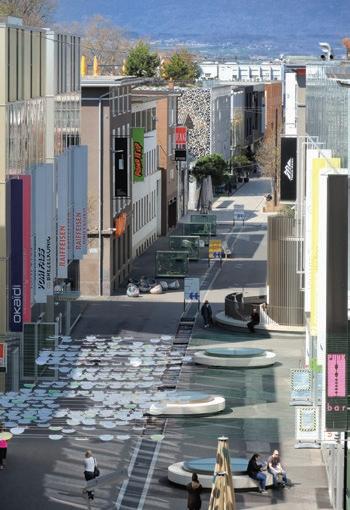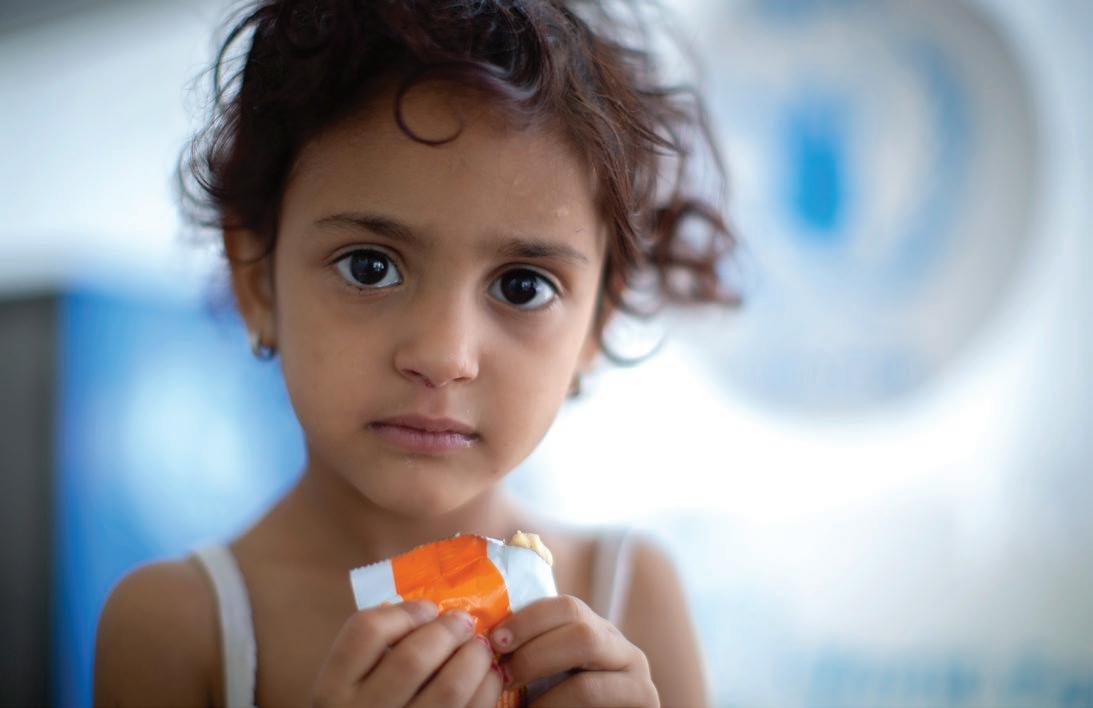
7 minute read
Diplomatic Agenda: Switzerland’s effective COVID response
COVID-19: The Swiss experience so far
routes passing FIRST NAME: Salome through Switzerland, the number LAST NAME: Meyer of overall daily CITIZENSHIP: Swiss border crossings amounts to 2.3
Advertisement
CAME TO CANADA AS TECO REPRESENTATIVE: Feb 13, 2019 million, about nine times the
PREVIOUS POSTINGS: South Korea, U.K. and China daily crossings on the Canadian-U.S. border. To be effective, the Swiss government’s response strategy to fight the spread of the
In Switzerland, the first case of COcoronavirus needed to take this reality into VID-19 was identified Feb. 25 and the account. It did so by declaring an “extraorfirst case of community transmission dinary situation” — basically a national came on March 2. As of May 29, there state of emergency — as set out in the Fedwere approximately 31,000 confirmed eral Epidemics Act. This step allowed the cases with a death toll of 1,700 out of a federal government to order the introducpopulation of 8 million. That makes Swittion of uniform measures in all cantons, zerland one of the most affected countries effectively limiting provincial powers, in Europe. Switzerland hit its peak of new which was a first for Switzerland. But this cases at the end of March and through unprecedented move was deemed necesearly April. The rate of new cases began to sary, considering the spatial density and slow in mid-April, and so did the number high degree of mobility in Switzerland of people admitted to hospitals. Since outlined above. Centralizing the COVID early May, daily new infections have levresponse at the federal level was preceded elled off to between 10 and 50 —which is by a short, but in-depth, consultation proequivalent to a daily increase of between cess with the cantons, and accompanied 0.05 and 0.1 per cent of total infections. throughout by close co-ordination and coFortunately, since the outbreak of the panoperation with (and among) them. demic, hospital capacities have not been The actual measures taken in Switzeroverwhelmed in Switzerland. land are quite similar to the ones taken
The recent positive trends in Switzerby Canadian authorities. They include land can be directly attributed to the rethe closing of all non-essential businesses, sponse by the Swiss government and the schools and universities, indoor and outSwiss people. And the response, in turn, is door entertainment and leisure facilities, directly linked to the context within which as well as restaurants and bars. Gatherings it needed to be formulated: Like Canada, of more than five people were banned Switzerland is a federal state with its 26 nationwide, and strict physical distancprovinces, known as cantons, enjoying ing requirements introduced, applicable wide-ranging powers and jurisdictions in private as well as work environments. in a variety of policy areas. Switzerland However, and again similar to the Canamight be known for its natural beauty, but dian approach, the Swiss federal governit is also one of the most densely popument refrained from issuing curfews or lated countries in Europe, with a high a blanket stay-at-home order for people degree of domestic mobility. A full 70 per without symptoms. Public parks have recent of the Swiss workforce commutes to mained open for exercising, but distancing a workplace outside of their municipality, rules must be followed. Domestically, no many crossing provincial borders to do so. inter-cantonal travel restrictions were in Every day, 330,000 workers from neighplace at any time, though the public was bouring countries — Germany, France, strongly discouraged from travelling. ReItaly, and Austria — cross the national borstrictions for entry into Switzerland were, ders to work in Switzerland. With some however, introduced, with exceptions for of the most important European transit cross-border commuters, many of whom work in essential services, such as the health-care sector or the pharmaceutical industries. This measure was taken in coordination with neighbouring countries. Around 50,000 people were turned away over the course of March and April, which was below the expectations of Swiss border authorities. It seems that most people decided to refrain from trying to cross in the first place. Along with the measures to increase physical distancing goes testing. With thousands of tests carried out each day, Switzerland had one of the highest per-capita rates of testing in the world in March and April. Early preparation and a comparatively high density of accredited laboratories and a strong health-science ecosystem in Switzerland allowed for domestic production of testing kits. Additionally, contact-tracing is being enhanced, in step with the gradual easing of restrictions. To that end, the Federal Institutes of Technology in Zurich and Lausanne jointly developed a smartphone app. It has been approved by the health ministry and is currently in pilot phase (likely until end of June), before a nationwide rollout. There are, of course, privacy and data security concerns. To address these, the source-code is open and the app processes data locally and automatically deletes them after three weeks. No contact tracing data leave the phone unless authorized by the user. According to an early survey, around 60 per cent of the Swiss population plan to download the app.
Now that we see a significant decline in the number of new cases, Switzerland has started easing restrictions. The positive trajectory has allowed the Swiss authorities to ease more restrictions faster than expected, while keeping in mind the fragility of the situation. In different phases over the course of several weeks, schools, restaurants and most shops were allowed to reopen, with safety protocols in place. The third stage of the four-stage plan was activated June 6 and included the reopening of campgrounds and events with crowds of up to 300 people. Borders to neighbouring countries were reopened on June 15. This step-by-step reopening strategy, too, was closely co-ordinated with the cantons, as well as the private sector. The federal government defined guidelines and timeframe, while the cantons and the private sector are in charge of drawing up and implementing safety
protocols. This approach taps into a long tradition of bottom-up solution-finding processes in Switzerland, the basic idea being that each industry knows best how to protect employees and customers under social-distancing guidelines while running business operations in practical terms.
None of the measures and actions taken by the Swiss government would have borne fruit had the public not followed them. Mobilizing an entire society to voluntarily restrict their freedom is a challenge for any leadership. Imposing restrictions on citizens who are accustomed to having the last say in the political decision-making process, as is the case in the Swiss system of direct democracy, is an additional challenge. The Swiss government meets these challenges by communicating to the public regularly, coherently, transparently, with empathy and based on the best scientific expertise and advice available. Through credible communication, unprecedented actions become understandable. The government also laid the foundation for an informed debate and political discourse, which is ensuing now that the economic fallout of the crisis is becoming apparent.
Depending on the realities on the ground, different nations choose different
The Flon, usually a heavily travelled district in Lausanne, is shown here during the pandemic.
strategies and policies to address the pandemic. But one thing has become abundantly clear: No country can overcome this global crisis on its own. International co-operation has been crucial for Switzerland, whether to secure supply lines or procure and share essential equipment for health-care providers and hospitals and whether to co-ordinate policies regarding travel restrictions and border closings or whether, by teaming up with partners such as Canada, to bring home our citizens stranded abroad in the largest repatriation effort in the history of our countries. International and multilateral co-operation will remain indispensable to develop diagnostics, treatments and a vaccine, and to make them accessible for all. A rules-based and co-operative international order continues to be the single best tool we have to deal with the globally disruptive effects of this ongoing crisis while safeguarding human rights and socioeconomic security. In this, too, Switzerland and Canada are aligned.
I would like to conclude with a word of gratitude to all the essential workers in Canada, Switzerland and around the globe. Without them, all the strategies, policies and measures would have been futile. They risk their lives for us, and we owe it to them to continue to follow the rules in these difficult and unprecedented times in order to make sure the early first successes in mitigating and containing the spread of the virus will be sustained. D
SAVING LIVES CHANGING LIVES
Join us @WorldFoodProgramme

Follow us @WFP_Canada
Famine still threatens millions in Yemen
WFP/Mohammed Nasher
The UN World Food Programme is feeding over 12 million people a month.
Our support has so far saved Yemen from the brink. It must continue. Money alone won’t end hunger in Yemen. Yemen needs lasting peace. But until the weapons fall silent, your contribution could keep a child alive.










